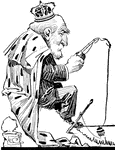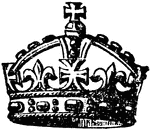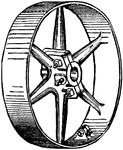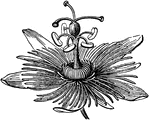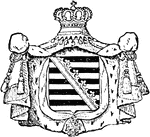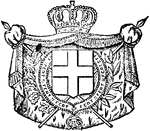
Double Crown
A gold coin of the value of 10 or 11 shillings, current in England in the seventeenth century. It was…

Double Crown
A gold coin of the value of 10 or 11 shillings, current in England in the seventeenth century. It was…
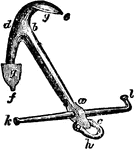
Common Anchor
"The shank is the straight part, ab; the square, ac, is that part of the shank to which the stock and…
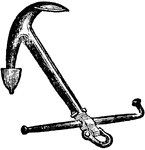
Admiralty's Anchor
"The Admiralty anchor differs only from the ordinary anchor in having a nut, a, worked on the square,…

Rodger's Anchor
"The stock is of iron in large as well as small anchors, and is made with a mortice, to fit over the…

Trotman's Anchor
"The stock is of iron, similar to the Admiralty anchor; the shank is of rectangular section, somewhat…

Martin's Anchor
"The anchor is represented in the position in which it lies on the ground just before taking hold. The…

Bower Anchor
"A, is the cathead; B, the fish davit; C, and E, bollards; D, the bill-board. The anchor is held in…

Ticino Bridge
"The covered bridge over the Ticino at Pavia was erected, under Gain Galeazzo Visconti, about the end…
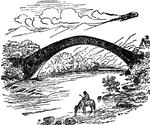
Pont-y-tu-Prydd
"The Pont-y-ru-Prydd goes over the River Taff near Newbridge. The arch measures 140 feet between the…

Pschent
A sovereign crown of Egypt, composed of the tall pointed miter, or white crown, of southern Egypt, combined…
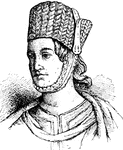
Pshem
A head dress for women, derived from the East, and adopted in Spain in the thirteenth century.

Dannebrog
"The cross of the Danisn order of the Dannebrog, a white cross surmounting a red one, with the royal…

Crown
"The crown of William I and his successors was a plain circlet heightened with four spikes having trefoil…
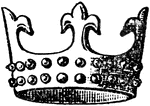
Crown
"Henry I enriched the plain circlet with gems, and on his great seal the trefoils of his fathers crown…

Crown
"The effigies of Henry II, Richard I, John, and their queens, show the crown to have made such an advance…

Crown
"The crown of Henry III has a plain circlet heightened with trefoils, a slightly raised point intervening…

Crown
"The truly beautiful crown of Edward II as it is represented in his effigy, was formed of four large…
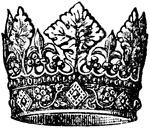
Crown
"It would seem from the crown, sculptured with elaborate care upon the head of his effigy at Canterbury,…
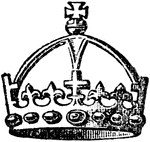
Crown
"The arched crown in its earliest form was introduced by Henry V.; and, with the arches crosses, which…

Crown
"Upon his seal as earl of Chester, the same sovereign has the circlet of his open crown heightened with…
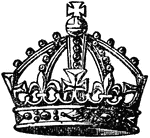
Crown
"The crown of the Stuart sovereigns, the first kings of Great Britain, James I and Charles I, had four…
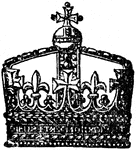
Crown
"Drawn from the royal achievement of Henry VII, sculptured with great spirit above the south entrance…
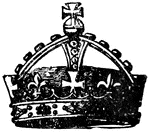
Crown
"The form of the arches shown appear for the first time upon the great seal of Edward VI." — Encyclopedia…

Crown
"The crown made for Charles II and also worn by James II, William III, and Anne, closely resembled an…
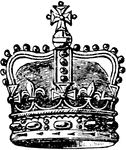
Crown
"The crown made for Charles II and also worn by James II, William III, and Anne, closely resembled an…

Crown
"The crown made for the coronation of Queen Victoria, has its entire surface completely covered with…
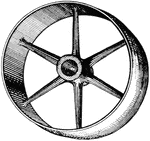
Crown Pulley
A pulley with a convex rim, much used where various cases belts are in danger of slipping off.
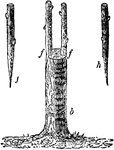
Crown-Grafting
"Crown-grafting is preferable to cleft-grafting, inasmuch as it leaves no open spaces in the wood. The…

Anchor
"The vertical or supporting beam of the A. is the shank, B; at the upper end of it is the ring, r; and…
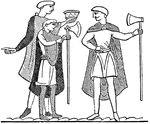
Bayeux Tapestry
"Bayeux Tapestry. The crown offered to Harold by the people." — Chambers' Encyclopedia, 1875

Crown
"Crowns were originally garlands of leaves; and in this form they have probably been used as an ornament…

Crown
"Crowns were originally garlands of leaves; and in this form they have probably been used as an ornament…

Crown-Work
"Crown-work, in Fortification, is formed to strengthen a weak front, or to occupy ground which might…

Carnivora
"Modifications of the Lower Sectorial Tooth in Carnivora. I, Felis; II, Cunis; III, Herpestes; IV, Lutra;…

A Frankish Chief in Full Armor
A chief of a Frankish tribe, wearing full battle armor. He stands looking to his right holding a long…
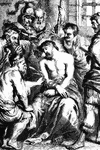
Christ Crowned with Thorns
This painting was done by the artist, Sir Anthony Van Dyck. The title of this painting is commonly used…
Volta's Crown of Cups
"The metallic elements C and Z each conssted of two metals, the plate C being of copper and the plate…

Achromatic Lens
"A double convex lens of crown-glass may be combined with a plano-convex lens of flint-glass so as to…

Molar Tooth
Longitudinal section of a molar tooth. Labels: k, crown; n, neck; f, fangs; e, enamel; d, dentine; c,…

The Teeth
Characteristics of the teeth. Teach tooth consists of a crown or body, projecting above the gum; root…

Structure of the Teeth
Structure of the teeth. A tooth consists of 3 structures, the dentine (2), or ivory, the proper dental…

Teeth of Man and Several Animal Species
1. Dentition (teeth) of man. 2. Dentition of hyena. 3. Dentition of pig. 4. Dentition of Patagonian…

Grafting
Image showing how crown grafting is done. Grafting is marrying two plants so the sap's circulation between…
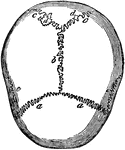
Skull Sutures
Sutures of the skull. Labels: a,a, the coronal suture, from the Latin corona, crown, so called from…
